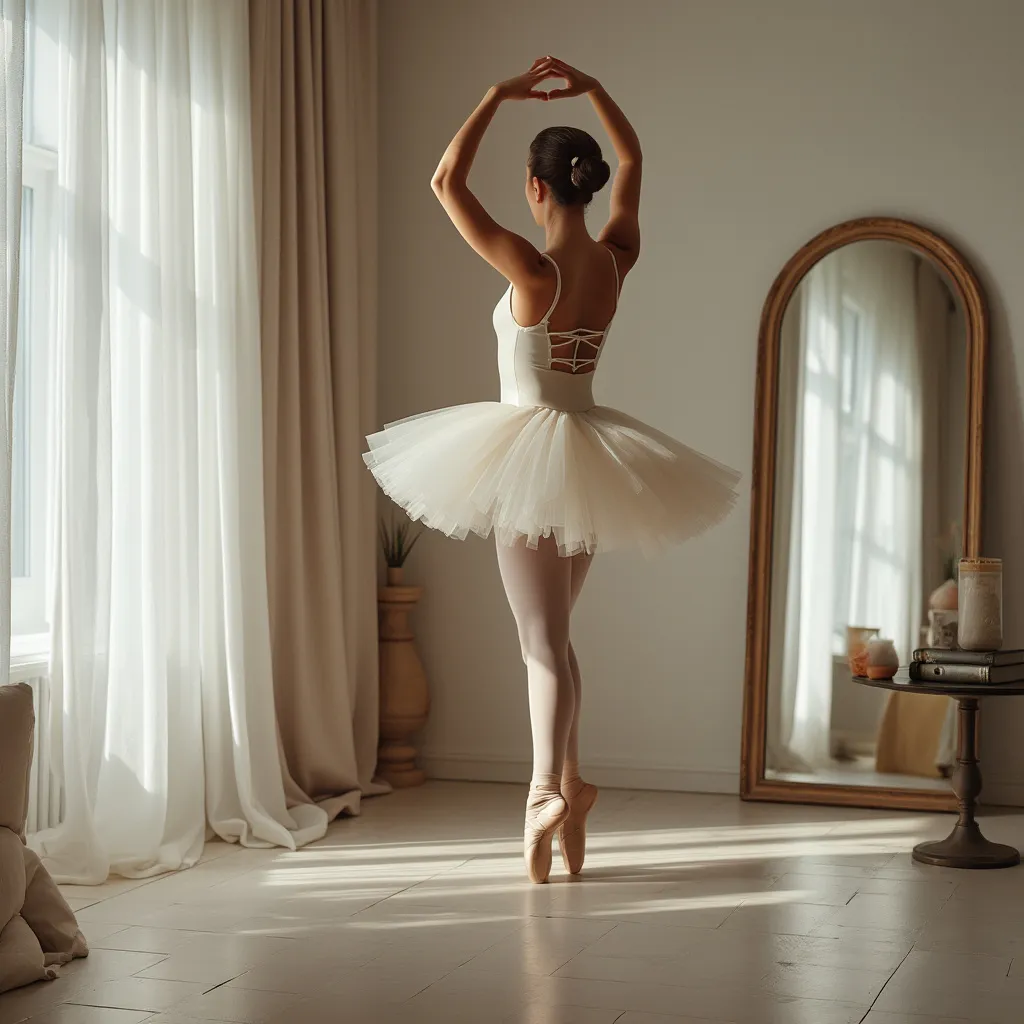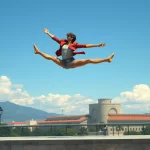Allegro: Embracing the Fast Movements

Introduction
In the world of ballet, the term “Allegro” refers to brisk and lively movements that are often characterized by their speed and agility. These fast-paced sequences are a cornerstone of ballet performances, showcasing the dancer’s technical prowess and athleticism. The importance of Allegro in ballet cannot be overstated; it is a fundamental component that adds dynamism and excitement to any performance. In this article, we will delve into the historical background of Allegro, provide a technical breakdown of how to perform these movements, discuss key elements of technique, highlight common mistakes and how to avoid them, explore its applications in choreography, and offer training exercises to help dancers master Allegro. Additionally, we will address frequently asked questions to provide a comprehensive understanding of this essential ballet movement.
Historical Background
The origins of Allegro can be traced back to the early days of ballet in the 16th and 17th centuries. Ballet itself evolved from the court dances of the Italian Renaissance, and as it spread to France, it began to incorporate more complex and varied movements. Allegro, with its emphasis on quick, lively steps, became a prominent feature in the repertoire of ballet movements.
Over time, Allegro evolved to include a wide range of jumps, leaps, and fast footwork. The development of Allegro was significantly influenced by notable choreographers and dancers who pushed the boundaries of what was possible in ballet. For instance, Marius Petipa, a renowned choreographer of the 19th century, incorporated intricate Allegro sequences into his ballets, such as “The Sleeping Beauty” and “Swan Lake.” Dancers like Vaslav Nijinsky and Rudolf Nureyev further elevated the art of Allegro with their extraordinary technical skills and innovative interpretations.
Technical Breakdown
Performing Allegro requires a combination of strength, precision, and agility. Here is a step-by-step explanation of how to execute a basic Allegro movement:
- Preparation: Begin in a proper ballet stance, with your feet in the first position and your arms in a preparatory position.
- Plie: Perform a demi-plié (a half-bend of the knees) to gather momentum for the jump.
- Jump: Push off the floor with both feet, extending your legs and pointing your toes as you rise into the air.
- Mid-Air Position: Maintain a strong core and proper alignment while in the air. Your legs should be fully extended, and your feet should be pointed.
- Landing: Land softly on the balls of your feet, returning to a demi-plié to absorb the impact and prepare for the next movement.
Key positions and transitions in Allegro include the fifth position (feet crossed, with one foot in front of the other) and various arm positions that complement the jumps. Common variations of Allegro include petit allegro (small, quick jumps) and grand allegro (large, expansive jumps).
Key Elements of Technique
Balance
Maintaining balance during Allegro is crucial. Focus on engaging your core muscles and keeping your weight centered over your feet. Practice balancing exercises, such as standing on one leg or using a balance board, to improve your stability.
Posture
Proper body alignment and positioning are essential for executing Allegro movements correctly. Keep your spine elongated, shoulders down and back, and head held high. This posture not only enhances your appearance but also helps prevent injuries.
Timing
Understanding the rhythm and timing required for Allegro is vital. Practice with a metronome or to music with a clear beat to develop a sense of timing. Pay attention to the musical cues and synchronize your movements with the music.
Strength and Flexibility
Allegro demands significant strength and flexibility, particularly in the legs, feet, and core. Key muscles involved include the quadriceps, hamstrings, calves, and abdominal muscles. To develop these muscles, incorporate exercises such as squats, lunges, calf raises, and core workouts into your training routine. Additionally, regular stretching will enhance your flexibility and range of motion.
Common Mistakes and How to Avoid Them
Even experienced dancers can make mistakes when performing Allegro. Here are some common errors and tips to avoid them:
- Incorrect Foot Positioning: Ensure your feet are properly aligned in each position. Practice footwork drills to reinforce correct positioning.
- Insufficient Plie: A deep plié is essential for generating power in your jumps. Focus on bending your knees fully before each jump.
- Poor Landing Technique: Land softly and quietly, absorbing the impact with a plié. Avoid landing with straight legs, as this can lead to injuries.
- Lack of Coordination: Practice coordinating your arm and leg movements to create a harmonious and fluid performance.
- Overlooking Musicality: Pay attention to the music and ensure your movements are in sync with the rhythm and tempo.
Applications in Choreography
Allegro is a versatile movement that can be found in various ballet styles and pieces. Some famous ballets that prominently feature Allegro include:
- “The Nutcracker”: The “Sugar Plum Fairy” variation includes intricate petit allegro sequences.
- “Giselle”: The second act features grand allegro movements that showcase the ethereal quality of the ballet.
- “Don Quixote”: The “Kitri’s Variation” is known for its lively and energetic allegro passages.
Allegro is used in different ballet styles to convey various emotions and themes. In classical ballet, it often represents joy and exuberance, while in contemporary ballet, it can be used to express tension and urgency.
Training Exercises
To master Allegro, incorporate the following exercises and drills into your training routine:
Jumping Drills
- Relevé Jumps: Practice jumping from a relevé position (standing on the balls of your feet) to improve your elevation and control.
- Box Jumps: Use a sturdy box or platform to practice jumping onto and off of it, focusing on height and precision.
Strengthening Exercises
- Squats: Perform squats to build leg strength and power.
- Calf Raises: Strengthen your calves by performing calf raises on a step or elevated surface.
Flexibility Drills
- Hamstring Stretches: Stretch your hamstrings regularly to improve your range of motion.
- Hip Flexor Stretches: Stretch your hip flexors to enhance your flexibility and prevent tightness.
FAQ
How long does it take to master Allegro?
The time it takes to master Allegro varies depending on the dancer’s experience, dedication, and training regimen. On average, it can take several months to a few years of consistent practice to achieve proficiency in Allegro movements.
What are the most important muscles to strengthen for Allegro?
The most important muscles to strengthen for Allegro include the quadriceps, hamstrings, calves, and core muscles. These muscles provide the power and stability needed for jumps and quick movements.
Can beginners attempt Allegro?
Yes, beginners can attempt Allegro, but it is important to start with basic movements and gradually progress to more complex sequences. Working with a qualified instructor can help ensure proper technique and prevent injuries.
What are some common injuries associated with Allegro?
Common injuries associated with Allegro include ankle sprains, shin splints, and knee injuries. These injuries often result from improper technique, insufficient warm-up, or overuse. To prevent injuries, focus on proper form, warm up thoroughly, and listen to your body.
How can I improve my technique for Allegro?
To improve your technique for Allegro, practice regularly, focus on proper form, and incorporate strength and flexibility exercises into your routine. Additionally, working with a qualified instructor can provide valuable feedback and guidance.
Conclusion
In conclusion, Allegro is a vital component of ballet that adds excitement and dynamism to performances. By understanding its historical background, mastering the technical aspects, and focusing on key elements of technique, dancers can elevate their Allegro movements to new heights. Avoiding common mistakes, exploring its applications in choreography, and incorporating targeted training exercises will further enhance proficiency. With dedication and practice, dancers can embrace the fast movements of Allegro and bring their performances to life.





